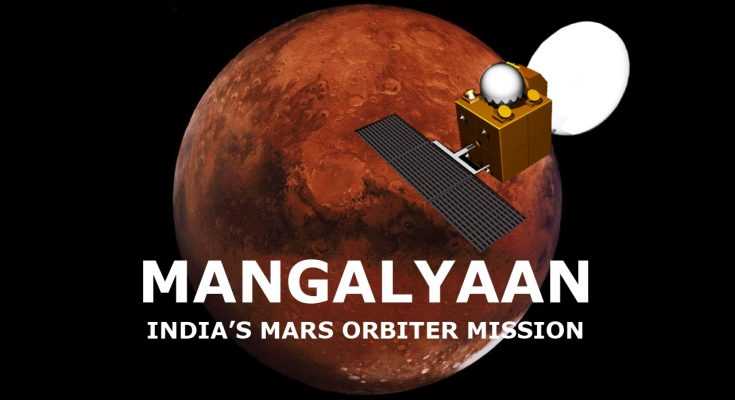
29-Jul-2019 , Updated on 2/21/2020 1:51:38 AM
Mars Mission: India's Major Achievement
India’s Mars Mission or we say, ‘Mangalyaan’, has been an ambitious mission that opens up the new opportunities to explore the ‘Red Planet’ i.e. Mars. The successful placement of satellite has proved the ability of Indian scientists to achieve the success in interplanetary mission with efficiency. The technological efficiency showcased by the scientists of ISRO has been nothing less than a miracle and a great example in front of all the institutes and countries who have been working towards this.
Indian Space Research Organization with this successful implementation has marked the day of September 24, 2014, in the nation’s history as a day of great achievement. With this success, India became the first Asian Country to reach on Mars and most importantly in its first attempt. As well as, this has been the world’s cheapest inter-planetary mission worth Rs. 4.5 Billion only, as mentioned by the then Chairman of ISRO, “K. Radhakrishnan”.

The mission Mangalyaan was even cheaper than an 8-lane bridge in Mumbai which cost $340 Million. It is less than the budget of film “Gravity” which was about $105 million and about one-tenth of what the US has spent on MAVEN (Mars Atmosphere and Volatile Evolution), making it undoubtedly the most cost-effective inter-planetary space mission to have ever been undertaken anywhere in the world. However, interestingly in the manufacturing of Mangalyaan Indian scientists took only 15 months while NASA took about 5-years to complete MAVEN.
The team scientists played a crucial role in it, but the role of women scientists have been highly appreciated all over India and by the ISRO team as well. During the mission, ISRO faced numerous challenges to make the mission successful. The satellite was proposed to launch by using GSLV launch vehicle but due to its failure twice, so the PSLV launched vehicle has been used along with the spacecraft thrusters at the perigee for a number of times to place the spacecraft into the trans-Mars trajectory. As the launch delay would have resulted in the delay of the mission by 26 months.

After the launching of spacecraft, another issue with it was to have constant communication with the MOM. For the purpose, a total of 32 ground support stations has been set up the ISRO across the world. These ground support stations associated with the mission has successfully transferred the information to the control room set up in Bengaluru. But when the satellite has been over the Pacific Ocean then the communication could have been not possible, so for this ISRO came with a solution of by positioning two ships assembled with powerful antennas to make sure to be in contact with the spacecraft without any interruption.
Another challenge for ISRO to make the engines running at zero points, where, there is no air. The scientists have surpassed this challenge as well and successfully made an engine that remains working and provides power to the spacecraft at zero points. As the spacecraft used miniaturized instruments, the signals were weak but loud. The signals from the spacecraft would take an average of 8–43 minutes of time to reach the Earth. During this phase, the Spacecraft took about 20 watts of power to send a single message to the earth. For this, A Deep Space The network antenna was set up on the outskirts of Bengaluru. These Network Antennas has a strong ability to capture and filter the weak signals from the loudness and external disturbances.

After this, the entry of spacecraft in Mars Orbit was very complicated. So, to overcome the challenge of failure of engine or non-availability of sunlight at specific points, the scientists have installed the lithium-ion battery. In order to provide a sufficient amount of power to the spacecraft in the absence of sunlight as well. This power of batteries has helped the engine to re-ignite itself.
Thus, the successful installation of the satellite on the Mars surface has completed the preliminary steps of ISRO scientists in a planned manner. In a no time, the satellite has been sending incredible photographs and scientific data of Mars. However, the planned life duration of the mission was 6 months, but it is still operating for over 3 years now. And this mission has made India a forerunner in the interplanetary missions of the future.

Other
I am a content writter !
Join Our Newsletter
Subscribe to our newsletter to receive emails about new views posts, releases and updates.
Copyright 2010 - 2026 MindStick Software Pvt. Ltd. All Rights Reserved Privacy Policy | Terms & Conditions | Cookie Policy